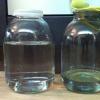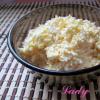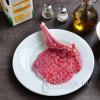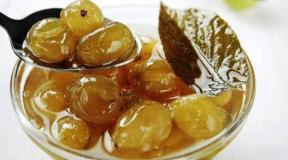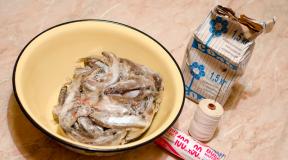Clarification of fruit mash before distillation. Distillation of mash: pre-cleaning methods
When preparing moonshine, it is important to properly clean the mash. If it is not clarified, then the finished drink will have an extra smell and harmful impurities.
Let's take a closer look at how the mash is clarified at home, as well as what methods of clarification exist and which are more effective.
Cooking mash
Braga is an alcoholic drink that can be drunk or used later for further distillation into moonshine. It is obtained by fermenting sugar or other sugar products, which serve as the basis for distillation through special apparatus into moonshine.
In some cases, mash is made from potatoes, grains, or other starchy foods.
Before lightening the mash, it is important to understand how it turns out. The mash preparation process is as follows:
- To get five liters of mash, you need to take sugar (1 kilogram) and yeast (100 grams). Dissolve the yeast in boiled water at a temperature of thirty degrees. In a separate bowl, make a syrup with sugar and water. Mix the resulting mixtures with each other and add water up to five liters;
- Close the container tightly with the solution, put it in a warm place. To prevent the mass from exploding from a large amount of carbon dioxide, be sure to make a water seal or put gloves with holes on the jar;
- Fermentation lasts from five to ten days;
- When the process is over, pour the resulting drink into a clean bowl. It must be poured carefully so as not to touch the sediment that has settled at the bottom.
To check the readiness of the mash, look carefully to see if it has the following signs:
- If a hydrodosing device was installed on top of a container with a wash, and carbon dioxide bubbles do not come out through it, then the mash is already ready;
- When stirring the mash, the bubbles rise to the top;
- The mass tastes bitter, without sweetness;
- The sugar is completely fermented and not felt.
If the brew is of high quality, all the described signs should be observed when checking it. The degree of readiness of the mash is still checked in the following ways:
- If it costs 3 - 28 days;
- If the fire is not extinguished when a lighted match is offered to the home brew, it means that it is already ready;
- The bitter taste also indicates readiness of the brew.
Braga is ready for further use. If you want to store it, bottle it and close the lids tightly.
Difficulties in making mash
During the preparation of the mash, the following situations may arise:
- If the mash wanders for a very long time. This may indicate that the temperature regime was violated, or bad yeast was used or an insufficient amount of it;
- If fermentation is over, and the taste is still sweet, it is possible that the initial proportions of sugar and water were violated before distillation. Or the yeast has developed a large amount of alcohol, and can no longer perform its function. To correct this situation and restart the fermentation process, you need to add a little more yeast to the mash;
- If you cannot overtake the ready-made mash immediately, you can put it in the refrigerator. It can be kept in the cold for no more than two weeks. To prevent harmful microbes from entering the product, it must be sealed. But, nevertheless, it is not recommended to store the brew. Since even in the cold, it can turn sour. Therefore, immediately after fermentation, it must be distilled.
If you are interested in such a question, how much moonshine can be obtained from the mash, you need to take into account how much raw material you will take. For example, a kilogram of sugar makes a liter of drink. Its fortress will be 50%. A good result will be getting 1.2 liters of moonshine. If you want more moonshine, add more sugar accordingly.
Why is it necessary to lighten the mash?
It is not necessary to lighten the mash. But in order to get a high-quality drink, it is still recommended to resort to such a process.
When the yeast enters the alembic still, it starts to burn. Because of this, in the future, the moonshine becomes not very tasty and acquires an unpleasant smell. If you act on the drink with a sorbent (bentonite, gelatin or other methods), the yeast will fall down in an even layer, and the mash itself will brighten.
Mash clarification process
When the fermentation process ends, most people who make alcoholic beverages at home make the mistake of not brightening the mash. This mistake further affects the taste and smell of the drink. To lighten the drink, they resort to the use of bentonite - a special clay that is used by humans for various purposes. For home brewing, you need to purchase bentonite for winemaking purposes (it is important when buying a product to carefully look if there is such a mark on the package).
15 grams of funds are taken for every ten liters of mash. Bentonite dissolves in hot water. Wait for it to completely dissolve. Pour the resulting homogeneous mixture into the mash. The clarification process can take from five minutes to 24 hours. Such a long period of time depends on the quality of bentonite, its quantity, water hardness and other points.
After a while, the mash is poured into a clean dish and used to distill moonshine.
To clean the moonshine from impurities and unpleasant odors, they resort to correct fermentation, clarification of the mash, high-speed distillation, re-distillation, purification with activated carbon, purification with egg or milk, filtration. To get high-quality and tasty moonshine, it is recommended to use all cleaning methods.
Bentonite instructions for clarifying mash
Bentonite is an ecologically natural material and it removes harmful substances from alcoholic beverages well. Cleansing with bentonite is called mash clarification. For clarification of alcohol and mash, a special bentonite is produced for the wine industry.
The instructions for use say the following:
- For one liter of the drink that needs to be clarified, you need to take 5 - 7 grams of raw materials;
- Bentonite is diluted in five times the volume of the clarified drink;
- The resulting mixture must be left to swell for three hours;
- Add the resulting mass to the entire volume of the drink;
- After stirring well, let stand until the drink completely lightens and the sediment falls to the bottom.
After opening the package of bentonite, it must be stored in a tightly closed bag in a cool dry place.
Methods for lightening mash
There are many different ways to lighten the mash. But, the following methods are considered the most effective:
- Lightening with cold. The drink is taken out to a cold place. The temperature should be from five to ten degrees above zero (in no case minus). The brew is clarified in this way for three to ten days. When the drink brightens, it is poured into a clean container, leaving a sediment at the bottom;
- Clarification with bentonite. Bentonite helps turbid particles settle to the bottom faster, adsorbs oxidative enzymes, destroys microorganisms, and lowers protein and other substances. Clay should be crumbled as finely as possible. Then it is diluted with water and waited for three to four hours until it swells. Then the water is drained, and the resulting mass of bentonite is diluted with mash (100 milliliters). Having mixed well, a homogeneous liquid is poured into the entire volume of the mash. As soon as the mash settles, it is poured into an empty container, and the sediment is poured out onto the street. Do not pour bentonite sediment down the sink or toilet! Since it can provoke the appearance of cement plugs in the sewage system, which are difficult to remove;
- We lighten the mash with a filter press. Such a device works under the influence of pressure. For a filter press, you need to take a filter paper that has an optimal porous structure. It is this material that prevents solid particles from penetrating into the interior of the wash. Cardboard consists of cellulose, which is a natural, environmentally friendly raw material.
Thanks to the filter press, the mash is not only clarified, but also sterilized and washed. For fine cleaning of the mash, you need to take cardboard with small pores, for coarse cleaning - with large pores;
- Clarification of mash with hibiscus tea. Hibiscus is a tea drink made from dried Sudanese rose flowers. It has a high acidity and copes well with lightening the mash. For 10 liters of mash, you need to take 70 grams of hibiscus tea flowers. Pour the flowers with a liter of water and bring to a boil. Stir constantly. After turning off the heat, cover the container with a lid and refrigerate to twenty degrees. Add hibiscus to the mash, stir and let stand for 24 hours. Drain the clarified drink and distill in any way. After this type of clarification, the mash turns red, but this color does not affect the taste of the alcoholic beverage;
- We clean the fruit mash with gelatin. Before distilling fruit mash, it is also important to clarify them. Gelatin binds the yeast sediment, but at the same time leaves an apple, plum, pear or cherry flavor in the finished moonshine. For 10 liters of mash, you need to take two grams of gelatin. Pour one gram of gelatin with water (200 milliliters). Let stand for 24 hours in the room on the table. Change the water every 8 hours. After a while, add warm water to the swollen gelatinous mass. Pour the resulting mass into the mash. Let stand for three days and drain off the sediment. Do a distillation;
- Bread and molasses mash can be clarified with lime. Dry quicklime (a few grams) is added to the mash. When the sediment falls to the bottom, clean wash is poured into another container and used to distill moonshine.
When applying any of the above methods of lightening mash, it is important to remember that you need to have a measure in everything. Since, together with foreign substances, aromatic substances can be removed from the drink. Because of this, the mash will become tasteless and colorless.
Now you know that before distilling the mash into moonshine, it needs to be clarified in order to improve the taste of the drink. By choosing one of the above described methods of clarification, you will get high-quality, clean, aromatic and tasty moonshine at the end.
(we recommend choosing an apparatus with a distillation column of the brand), questions regarding the technology of making homemade alcohol begin to grow exponentially. It is not enough just to properly prepare the mash, you also need to properly prepare it for distillation. For this, the wash is removed from the sediment and most often clarified. Let's figure out why this is done.
Do I need to clarify the mash before distillation
When the mash is ripe, a well-formed sediment is usually observed at the bottom of the fermentation tank. But its upper boundary is rather loose, and a turbid suspension is present in the liquid phase. If the sediment (residues of raw materials plus yeast) is not separated, then it will begin to burn during distillation. This will entail an unpleasant odor and many additional harmful products of thermal decomposition of organic matter. So, the liquid was separated from the sediment. But is it necessary to clarify the mash?
Mash clarification is the process of removing yeast residues from the liquid phase. In other words, the same suspension and loose sediment residues that could get into the liquid during its separation from the sediment are removed.
Why clarify the mash before distillation? Yes, then, to remove, if possible, all the remaining "large" organic matter in the form of yeast cells. So that there is nothing to burn in the tank, and the distillation process itself is quite long. The destruction of the cells of the spent yeast will occur not only with strong, but also with simply prolonged heating. And this, as we have already found out, is an extra “ballast” of impurities for the drink. If you have a strengthening or rectification column, then, of course, it is capable of separating a maximum of harmful substances, but if, for example, you had a classic type, then it is better to prepare the mash for distillation to the maximum.
In some cases, the yeast residue can give the drink a unique characteristic and pleasant notes, but this largely depends on the type of yeast, its amount in the residue and the method of distillation. Such technologies of distillation without clarification are used in production, they are technologically verified, but it is possible to repeat this at home only after long-term practice.
Do I need to clarify sugar mash?
Certainly. There are yeast in the solution, and it is from them that they relieve it with the help of clarification.
Do I need to clarify the grain mash?
It is desirable. However, not every method of revelation is suitable if you want to preserve the organoleptic properties of certain types of cereals, for example, barley or rye.
The better to lighten the mash at home
The choice of a suitable clarification method will depend on the type of raw material from which the mash is made. Sugar mash can be clarified in any of the following ways. There are restrictions for other types of raw materials.
Bentonite
One of the most effective bleaching agents is bentonite (white clay). However, it is mainly used for sugar mash, since, due to its high absorbing properties, it negates the taste and aroma of raw materials. And if in the case of sugar and some grains this does not pose a problem, then in the case of fruit, berry and other aromatic raw materials, the drink will be devoid of zest after the clarification procedure. But, for example, in the case of beet mash, it will be beneficial to soften a specific aroma.
Do I need to clarify the mash with bentonite if it is grain? You need to lighten. As a rule, the organoleptic properties of cereals are not so pronounced (with the exception of some varieties), therefore, white clay does not harm the drink in this regard.
Gelatin
The method is the best suited for fruit and berry raw materials. It is good because it only removes yeast into the sediment and does not bind “aromatic” molecules. The same method can be applied to grain or sugar mash, if getting bentonite is problematic. However, it must be remembered that this method itself is longer in time.
Is it possible to clarify the wash without the use of additional substances?
Ripe sugar mash can be left in the cold (from 5 to 15 ° C) for several days (even up to 2-3 weeks), then the mash is clarified without outside interference. However, fruit and cereal mash can turn sour during this time.
To obtain high-quality moonshine without foreign smell, it is necessary to clarify the mash before pouring it into the distillation cube. If this is not done, then the unclarified alcohol-containing liquid poured into the container will invariably burn when heated.
And from this - unpleasant aftertaste and nasty smell low-grade moonshine. must be clarified before distillation, using both natural methods and using chemicals.
Important! Before starting the clarification process, you need to make sure that the wash has reached the desired strength (11-12%) and is already ready for distillation.
Some types of mash self-clarify, that is, the fermented ones settle to the bottom in a thin layer and you can just remove the wort from the lees... But more often than not, this does not happen. We see a division by fractions, but the lower one, which contains impurities - loose due to suspended matter.
Reference. In order to better assess the state of separation into fractions, you should put the wash in glass container big size. In this case, it is good to use a water seal (rubber glove) so that the alcohol does not evaporate.
To obtain a dense sediment from which it is easy to remove the liquid necessary for distillation, the mash must be cooled for 5 - 7 days... In this case, the cooling temperature should be about 6 ° C (+ -2 ° C)... For this, a basement (cellar) is used, it is possible and, although this can be problematic due to the size.
During the specified time, the brew will lighten naturally and you can separate clear liquid from sediment.
It is best to do this through a transparent tube, in the same way as it is removed from the sediment. wine: the fermentation tank should be located higher (for example, on a chair or table), and the alembic - lower so that the mash naturally leaves through the straw.
But you can also carefully drain the clear liquid, making sure that no sediment gets into the main part. If additional ingredients were used: bread, fruits, jam, etc., then it is possible that there will be float some light ends... In this case, you need to drain through a colander (sieve).
Caution! If the mash is not yet completely ready for distillation, then to stop fermentation, it must be heated to a temperature of about 60 ° C, but not higher, so as not to lose alcohol!
Cold lightening
This is another natural way to lighten mash, although it has both supporters and opponents. As you know, water freezes, as well as those impurities visible to the eye that are in the wash, and a transparent alcohol-containing liquid does not freeze. She will remain just merge and overtake.
But there is clearly a catch in freezing the mash. As everyone knows, vodka from a store freezes at -40 ° C, and mash has a much lower degree.
Output: freezing for clarification should take place when not too low temperatures (not lower than -10 ° С).
Clarification of mash with bentonite
Bentonite is, in fact, an ordinary white clay, which is found everywhere (not to be confused with lime!).
 If you live in a village or have a dacha and know where the development of white clay is nearby (peasants usually collect it for their needs - whitewashing, additives for food for birds, etc.), you can also dig it up and then use it to clean the mash and moonshine.
If you live in a village or have a dacha and know where the development of white clay is nearby (peasants usually collect it for their needs - whitewashing, additives for food for birds, etc.), you can also dig it up and then use it to clean the mash and moonshine.
But it will not be difficult for city dwellers to buy bentonite either: it is inexpensive, but the effect in cleaning alcohol-containing liquids from impurities is almost instantaneous.
The technology for cleaning the wash with bentonite includes the following stages:
- Mineral crushed to a powder state... You can - in a coffee grinder, although grinding in a mortar is quite suitable, as was done before.
- It is necessary to use from calculation: for 10 liters of mash - 1 full tablespoon of bentonite.
- The resulting powder, taken in the required amount, is poured with about half a liter of boiling water, stirred well and left for a couple of hours. During this time, bentonite swell.
- The remaining water (if it has not all been absorbed) is drained and the swollen white clay is diluted with a mash, so that it is more convenient to pour it out.
- Pour into the main volume of the mash with a stream, stirring all the time (as jelly is brewed).
- Leave for a day, then poured off the sediment.
Which bentonite clay is suitable? There is always a choice:
- Special winery... The disadvantage is that it is not easy to get.
- Regular, independently dug up. True, you can never know what impurities it contains.
- Construction... Sold in specials. stores.
- Cat litter no fragrances. Look at the composition, there must be bentonite in it.
Cleaning hibiscus mash

Hibiscus tea (petals of hibiscus flowers or, in other words, Sudanese rose) can also be used with success. For 10 liters of mash, 70 g of hibiscus is enough.
Reference. Clarification occurs due to the presence of acids in the flowers, which give the hibiscus drink a specific taste. Acids "lull" the yeast (stop their vital activity), bind impurities and lower them to the bottom of the container.
The clarification process goes like this:
- fill dry hibiscus flowers with a liter of water (if the brews are more than 10 liters, respectively, the amount of hibiscus and water increases) and put on the stove;
- heat to a boil, stirring occasionally;
- after boiling, turn off the stove, cover the pan with a lid and leave to cool. During this time, the "tea" will infuse, become bright and sour;
- squeeze the flowers and discard, pour the liquid into the mash and stir;
- leave for a day, then remove from the sediment.
Consider. Braga, although it becomes transparent, turns pink. But it will be, as usual, colorless.
It is not very desirable to use this method for fruit, as it can deprive the finished product of the expected aftertaste.
Uses of citric acid
 As we have already found out, acid helps to quickly remove sediment from the wort, therefore it is widely used for this purpose. citric acid available to everyone.
As we have already found out, acid helps to quickly remove sediment from the wort, therefore it is widely used for this purpose. citric acid available to everyone.
Use a 20/25 gram sachet for 10 liters of mash.
The acid is first diluted in a small amount of liquid, then mixed with the entire contents of the fermentation tank. After a day, they are poured and distilled.
note! So that with this method there was no acid taste in the moonshine, after straining it is necessary to add a substance to the wort that "quenches" the acid - chalk or soda... And only then distill.
Gelatinous gluing method
Gelatin effectively sticks together suspended particles, yeast, and they precipitate. This method is great for all types of mash, because it does not “kill” the specific aroma of fruits, berries, grains, etc., the presence of which we want to feel in the final product.
A little gelatin is required: 2 grams per 10 liters of mash... This amount requires 2 cups (400 ml) of water. But the preparation process itself is no less important. Cleaning the wash with gelatin is as follows:
- Fill gelatin with cold water for a day. During this time, we change the water three times (every 8 hours).
- After the expiration of time, add warm water to the swollen gelatin and heat it with stirring until it dissolves (no granules should remain), but in no case do we boil it!
- Pour into the mash, stir.
- After a precipitate has formed (this will happen in a few hours, or even 2 - 3 days), drain the clarified mash through a tube or siphon.
Express method with milk
With this method, distillation can be carried out after 2 to 3 hours.
Important. Use low-fat milk. If it is homemade, then it should be separated (using the reverse).

A liter of milk is enough for 10 liters of home brew. It is poured in, stirred and after a few hours filtered through cheesecloth, you can additionally - through a paper filter.
Using paper filters
This method provides for a minimum loss of brew. Use a funnel (cut plastic bottle) and coffee maker filters or special filter paper. Consumption: 1 filter for 2 liters of wort.
Advice. To make the material consumption less and the time for straining to be somewhat reduced, you can first drain the wash through gauze, and then bring it to condition by filtration.
Clarification with alcohol
Alcohol also inhibits yeast activity and causes it to precipitate. For which it is enough to pour a little alcohol or "tails" from previous forcing into the wort before distillation. It is only important that they have a strength of at least 25%.
In less than a day, the mash can be removed from the sediment and distilled. The advantage of this method is that, in addition to purification, it increases the yield of moonshine, and the residues from the previous distillation do not disappear.

Usually, after the end of the fermentation process, yeast is present throughout the entire volume of the mash, which gives it a cloudy appearance. If you start distilling such a mash, a large amount of yeast will end up in the alembic, and then into the distillation product, which will give a yeast flavor. In addition, the yeast, falling to the bottom of the alembic, can burn and interfere with the uniform heating of the liquid. To avoid getting yeast into the moonshine still, you need to clarify the mash.
Natural clarification occurs within a few days after the end of the fermentation process. When the alcohol in the mash becomes about 12%, the yeast stops its activity, falls into suspended animation and gradually precipitates to the bottom. You can accelerate the natural clarification by cooling the mash to minus 2-5 ° C, at this temperature the yeast will precipitate in a day. There are more technological and faster ways to lighten.
Methods for clarifying sugar mash
Most often, clarification is required when preparing just the classic sugar mash, since it is put exclusively to obtain raw alcohol or moonshine with minimal taste and aromatic properties. To clarify such mash, you can use the fastest and most effective methods without fear of losing taste. Clarification of mash with bentonite
Clarification of mash with bentonite
Bentonite is an environmentally friendly fine-porous clay, consisting mainly of minerals of the montmorillonite group, which have a high binding capacity, adsorption and catalytic activity. The surface of 1 gram of bentonite is over 25 m2. The very small size of its particles and their peculiar spongy structure give bentonite a very strong sorbing capacity. Due to its unique characteristics, bentonite is widely used in winemaking for clarification (pasting) of wines. Bentonite has also passed from winemaking to moonshine making - it is also well suited for clarifying fermented mash.
- Braga should be completely fermented, as working yeast will reduce the effect of clarification to zero. For reliability, we recommend that you heat the mash to a temperature of 50 ° C - this is guaranteed to kill the yeast.
- Using a coffee grinder or mortar, crush the bentonite to a powdery state at the rate of 1 tablespoon per 10 liters of mash.
- Add 0.5 liters of hot water to each tablespoon of clay and stir thoroughly with a mixer or by hand until a homogeneous suspension is formed.
- Pour the resulting suspension into a container with mash, stir and leave the mash at room temperature.
- In a day or earlier, the wash should become transparent, and a dense white precipitate should form at the bottom. Now the mash must be carefully drained from the sediment. This is best done with a tap, hose or overflow siphon. The residue from the bottom obtained after clarification is not advisable to be drained into the sewer - you can get a blockage plug.
Clarification with citric acid
This method is perfect for clarifying both sugar and grain mash. Citric acid works in much the same way as hibiscus. The acid acts in this way: it suppresses the activity of microorganisms, thereby stimulating precipitation. For 25 liters of mash, add about 60-80 grams of citric acid to the mash and mix. In a day, everything unnecessary should precipitate. Before distillation, it will be necessary to normalize the acidity by adding soda to the mash in the same amount as citric acid. After that, the mash is ready for distillation.
Clarification of mash with gelatin
If your mash is on fruits or berries to maximize the preservation of its taste and aroma, it should be clarified with gelatin. Gelatin sticks together yeast particles, and after two or three days they precipitate. To lighten the mash with gelatin, you must first prepare it: soak it in cool water for a day, change the water every 6-8 hours; after a day of such infusion, dilute the gelatin of hot water until it is completely dissolved; now this solution can be poured into the wash, stirring it. After a while, under the action of gelatin, yeast particles and impurities will precipitate, the mash must be carefully drained from it, after which you can immediately start distillation.
 Clarification with karkade tea
Clarification with karkade tea
A slightly more expensive way to lighten the mash is to use hibiscus flowers, or, as it is called, hibiscus tea. This tea increases the acidity in the mash and this leads to accelerated precipitation of the yeast. True, the increased acidity of the mash in the future will require its neutralization by adding alkaline components, such as chalk or soda. In order to use this method you will need:
- For every ten liters of mash, boil 70-80 grams of tea in one liter of water.
- Remove the container with tea from the heat, cover with a lid and wait for it to cool to room temperature.
- Add the resulting liquid to the wash and leave at room temperature for a day.
- Drain the resulting mash from the sediment and pre-normalize the acidity.
- You should not be afraid of the red shade of the mash - it will not affect the taste.
Clarification of mash with milk
This method is the most labor-consuming and uneconomical, but the safest! This method is especially suitable for fruit and cereal mash, as it will perfectly preserve the aroma of the initial product. The casein contained in milk binds well with fusel oils, forming an insoluble compound that does not break down even during distillation. For this method of clarifying the mash, it is best to use homemade milk of any fat content. To clarify 25 liters of mash, you will need 2.5 liters of milk. It is necessary to pour the milk into a fermentation vessel, the mash should stratify and all unnecessary precipitates, the mash must be filtered twice. After that, the distillation can begin.
 Cold lightening
Cold lightening
This method is completely free of costs, but in our latitudes it is available only in winter, early spring or late autumn. To lighten the mash with cold, it is necessary to take the mash to a cool room with an air temperature of 5 to 10 degrees. Braga should be clarified under these conditions within a week, then carefully drain from the sediment and immediately distill! Clarification with filter paper
This method is best used immediately after fermentation has stopped. In an ordinary funnel, you need to place filter paper suitable for the diameter of the funnel. Then pour the mash into the funnel in a thin stream. In this case, all impurities and yeast residues should remain in the filter, at the output you will get a clarified mash. Filters need to be changed.about the extent of their clogging (every 2 liters of poured mash).
To get clean and safe to drink moonshine, you need to start with the preparation of the wort. Many do not understand why clarification and cleaning of the mash are needed before the ferry. In fact, there are two reasons for this.
The first is to lower the remnants of raw materials (suspension) to the bottom so that they do not burn during heating in the distillation cube and spoil the taste of the moonshine.
The second, and no less important, is to get rid of some fusel oils already at the stage of preparation for the distillation. The less of them remains in the wort, the less it gets into the moonshine. And by cleaning it with home remedies, you can get alcohol that is excellent in organoleptic characteristics.
Reference. Fusel oil is a by-product of fermentation.
These are substances obtained as a result of the vital activity of yeast and their processing of the sugars contained in. In addition to ethyl alcohol, methyl, amyl alcohols, furfural, acetone, aldehydes and other impurities harmful to health are accumulated.
Perfectly cleanses and brightens the mash mineral - bentonite... It binds fusel oils and other impurities (suspensions) and drags them to the bottom with it. After settling, it remains to remove the wash from the sediment through a tube, and a lot of unnecessary substances will remain in, and they will no longer get into the moonshine.
Advantages and disadvantages
Many experienced moonshiners will confirm to you that after cleaning and clarifying the mash with bentonite, moonshine, even during the first direct distillation, no longer has that disgusting "aroma" that it usually does. In addition, the method has a mass advantages:
- bentonite is chemically neutral, it does not react with alcohol and other components of the wort. This means that it does not create by-products that can be hazardous to health;
- stimulates rapid precipitation of impurities. That is, the wash, "filled" with this element, will lighten in a few hours. With other methods (including in the hope of self-lightening), this takes several days;
- eliminates the specific yeast smell and taste even before ferrying;
- protects the wash from burning in the distillation cube, as it lowers the suspension to the bottom, which cannot be removed by filtration or exposure to other substances.
But also disadvantages the method is not without:
- It is undesirable to use bentonite for cereals, fruit mash, which have a high density. It can happen that the clay forms a kind of suspension with the wort, which does not settle to the bottom, and does not allow the product to be overtaken.
- It is strictly forbidden to pour the sediment into the sewer. He simply clogs the pipes, and sometimes it is possible to clean them only by dismantling them.
Caution. Pack the residue left after cleaning with bentonite in a tight bag placed in a bucket and put it in the trash can.
- Bentonite has a spongy structure and absorbs a lot of liquid without discerning whether it contains alcohol or not. Using this method, you will lose up to 5 to 10% of the mash, and with it the hypothetically obtained distillate. However, the issue is controversial. And you need to look for the answer to it for yourself, proceeding from a new question: what is more important for you: an extra pile of "lousy" moonshine or a little less product of excellent quality?

Where to get?
Bentonite is a special white clay that is also mined in our country. Perhaps there is also such a deposit near your house. Another way is to order online on a specialized website. But you can "get" bentonite in a simpler way - buy cat litter.
The main thing is that it does not contain various impurities, for example, to eliminate odor.
Advice. You can determine if the filler is suitable for your purposes by smelling it. If there is no foreign smell and there is no additional marking on the package, then it is suitable.
No worse than bentonite, ordinary white clay, which is abundant everywhere, copes with the task. Many people confuse it with bentonite, although these are different substances. White clay is kaolin... But also a good sorbent. And in the villages it has been used for a long time.
And you can buy it in pharmacies or cosmetic stores, where it is called "White clay for masks." It is also important here not to purchase clay with fragrances or additives. Only the cheapest, which contains one substance - kaolin.
How to breed?
Before adding bentonite or cat litter to the mash, grind it in a coffee grinder. Then dilute with water and be sure to let it swell.
How to clarify the mash with bentonite
If you took powder clay or ready-made bentonite, great. If you have a piece of clay, then it must first be crushed into crumbs. Then, at 120 ° C, fry in the oven for 45 minutes to dry the clay "into dust." Then grind in a coffee grinder or blender.
Attention. Cat litter must also be ground before use.
Ground bentonite (clay) is enough 1 tablespoon full with a slide for 10 liters of mash. If even a little more is not scary, everything will settle.
- Prepare a bentonite solution. About a glass of water to a spoonful of powder. Heat the water (not to boiling water) and stirring constantly, gradually add the powder. The solution should be as thick as kefir. Therefore, if there is not enough water, add a little and stir again.
Important. If the bentonite is lumpy (which is quite possible), mix it again with a kitchen mixer. It is necessary that the solution is homogeneous.
- Let the solution stand for 5-10 minutes. Stir again.
- Lift the fermenter onto a table or chair.
- Take a long spoon (slotted spoon, etc.) and, stirring, form a funnel in the mash. Pour the bentonite solution into it quickly, without stopping stirring.
- Leave to settle until the wort clears up and a thick layer of sediment appears at the bottom. This can happen in half an hour, or maybe in a day. Much depends on the properties of the mash and does not coincide even in different batches of the same composition.
- When clarification is obvious, insert a thin tube into the container, one and a half centimeter higher than the sediment. Pull the liquid into the tube with your mouth, lowering the other end into the container on the floor. All the liquid will drain out to the limit when the tube "grabs" the air.

How else to clean the mash at home
Do not think that clarification with bentonite is the only worthy way to clarify the mash and lower fusel oils and yeast into the sediment. There are tons of others that you can also try and make a conclusion for yourself as to what works best for you.
Cold or freezing - how long does it take?
To stimulate the process of self-clarification, in which dead yeast precipitates, cold cleaning is practiced:
- Braga is put in a place with a temperature from +2 to + 11 ° С for 12 hours - a day. The yeast, and with it a part of the fuselage, sinks to the bottom, the liquid becomes clear.
- Freezing provides for keeping the mash for several hours in a row in severe frost, not lower than -20 ° C. In this case, some of the water and impurities turn into ice crystals. It is necessary to quickly drain the liquid part, and discard the crystals.
- Freezing. This method is still used in Siberia and it is no longer cleaning the mash, but getting moonshine, although its quality will be low. Braga is exposed overnight to frost from -25 ° C, then unfrozen alcohol is drained. There is also a scrap method, but it is not very suitable for our purpose.
Instructions with hibiscus
The familiar red and sour hibiscus tea is a good mash cleaner. Boil the hibiscus petals (70 g per 10 liters of home brew) in 700 ml of water. When cool, add to the container, stir. Remove from the sediment every other day.
Attention. The clarified mash will turn red - this is normal, it will not go into moonshine.
Clarification with citric acid
As in the case of hibiscus, the principle of acid precipitation of microorganisms and impurities works. For 10 liters of mash, take a tablespoon of citric acid. No need to dilute, add and mix.
Caution.
The method changes the acidity. Therefore, add a tablespoon of baking soda after the acid. After sedimentation, remove from the sediment.

How to lighten with gelatin
Suitable for cleaning any wash, including fruit ones. 10 liters requires 2 g of gelatin. It is soaked three times throughout the day, each time adding (and draining) 400 ml of water.
Then add warm water and pour into the wash. The precipitate falls in a day or two.
Milk
It takes a liter of milk for 10 liters. Fat content in this case does not matter. The disadvantage of the method is in a thick layer of sedimentconsisting of flakes.
The brew will have to be filtered - first through cheesecloth, then through cotton wool.
Soda filtration
For 10 liters of wort, take 10 g of baking soda and dilute in the same amount of water. Pour, stir. Then remove the filter.
Attention. For mash, you can use soda ash, it copes better with the precipitation of impurities.
Potassium permanganate
Take 2 g of potassium permanganate per liter of mash, stir. Wait for the precipitate to settle. There is a recommendation, in addition to potassium permanganate, add soda in the proportion described above.
Activated carbon
With alcohol
To forcibly stop fermentation, add any amount of alcohol to the wash. Stir and wait until lightens.
Paper filters
They will also help to rid the wort of impurities, although there is enough trouble with them, and they need to be changed after every 1.5 - 2 liters.
Answers to frequently asked questions of novice distillers
- Braga is not clarified. What to do?
This happens if fermentation has not ended. Microscopic yeast fungi are still alive in the mash. They continue to produce waste products and prevent the wort from clearing. Therefore, they must be killed. There are two ways: to cool to a temperature at which they die, or, conversely, to heat up.
Reference. Yeast completely perishes at a temperature of +10 - + 11 ° С, at +12 - + 17 ° С, they fall into suspended animation and can restore vital activity when they find themselves in comfortable room conditions. The high temperature, which is critical for them, is + 40 ° С.
- How to stop the fermentation of the mash before clarification?
Always check the readiness of the mash for distillation, not by one, but by several methods:
- there is no gurgling in the water seal, the glove is completely asleep. If fermentation was without a water seal, then there is no foam on the surface, the characteristic hiss, which emits carbon dioxide, is not heard;
- bitter taste without a hint of sweetness, a distinct smell of alcohol;
- the match brought to the mash in the container does not go out, but continues to burn;
- signs of self-clarification are clearly visible: there is a sediment at the bottom, the liquid becomes not as cloudy as at first.
If there is a suspicion that the mash is not yet fully ready for distillation, but you need to drive, kill the yeast in one of the following ways:
- Refrigerate. To do this, at 12-14 hours, put the fermentation tank outside (balcony), if the temperature there is about +2 - + 5 ° С. Can be sent to the basement for a day.
- Heat up. Although at 40 degrees, the yeast begins to die, but to be sure, heat it to 60 ° C.
After such manipulations, the wort will clarify, and the sediment will fall out in a dense layer or flakes.
- Do I need to clarify the mash if it is planned to distill twice?
First of all, we recall that the mash is clarified not only for the purpose of precipitating fusel oils, but also so that the yeast residues, which are always in suspension in it, do not burn, thereby giving the moonshine an unpleasant taste note, which cannot be eliminated even by repeated distillation. ... Therefore, the answer is unambiguous: lighten.






